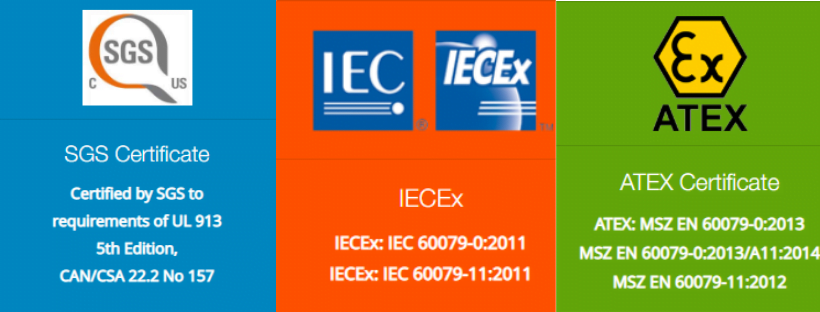Welcome to the Intrinsically Safe Store, your one-stop-shop for all your intrinsically safe equipment needs. As a leading provider of intrinsically safe devices, we understand the importance of international safety certifications like ATEX, IECEx, and NEC. In this blog, we will delve into these certifications, comparing their features, requirements, and global recognition. We invite you to explore our website to learn more about our products and services.
What are Intrinsically Safe Certifications?
Globally recognized standards, known as intrinsically safe certifications, ensure the safety of equipment used in hazardous environments. These certifications are crucial in industries such as oil and gas, mining, and chemical processing, where the risk of explosions is high. They guarantee that the equipment will not ignite flammable substances like gases, dust, or vapors.

ATEX Certification
The ATEX certification, derived from the French title “Atmosphères Explosibles,” is a European directive that ensures the safety of products used in explosive atmospheres. Equipment sold in the European Economic Area (EEA) must meet mandatory regulations.
- Scope: ATEX covers equipment and protective systems intended for use in potentially explosive atmospheres.
- Requirements: To obtain ATEX certification, a product must meet the essential health and safety requirements outlined in the ATEX directive.
- Recognition: While ATEX is a European standard, it is recognized and accepted in many countries outside the EEA.
IECEx Certification
The International Electrotechnical Commission (IEC) developed the IECEx certification as an international standard. It provides a global framework for countries to accept each other’s certifications, reducing the need for multiple national certifications.
- Scope: IECEx covers equipment used in explosive atmospheres, including electrical and non-electrical equipment.
- Requirements: To achieve IECEx certification, a product must meet the safety standards outlined in the IECEx scheme.
- Recognition: IECEx is globally recognized and accepted in many countries, including those outside the European Union.
NEC Certification
The United States uses the NEC (National Electrical Code) certification as a standard for safe installation of electrical wiring and equipment.
- Scope: NEC covers electrical systems and equipment installation standards, focusing on fire and electrical hazard prevention.
- Requirements: To comply with NEC standards, electrical installations must meet the safety requirements outlined in the NEC code.
- Recognition: While NEC is primarily used in the United States, it is also recognized and used in several other countries.
Comparing ATEX, IECEx, and NEC
While ATEX, IECEx, and NEC all aim to ensure the safety of equipment used in hazardous environments, they differ in their scope, requirements, and recognition. ATEX and IECEx focus more on the equipment used in explosive atmospheres, while NEC concerns itself more with the safe installation of electrical wiring and equipment. The EEA mandates ATEX, people recognize IECEx globally, and the United States primarily uses NEC.
Navigating Certification Standards: ATEX, IECEx, and NEC
Understanding the differences between ATEX, IECEx, and NEC is crucial for manufacturers and users of intrinsically safe equipment. These certifications not only ensure the safety of equipment but also its acceptance in different markets. At the Intrinsically Safe Store, we commit to provide products that meet these stringent safety standards. For more information about our products and services, please visit our website or contact us.


























